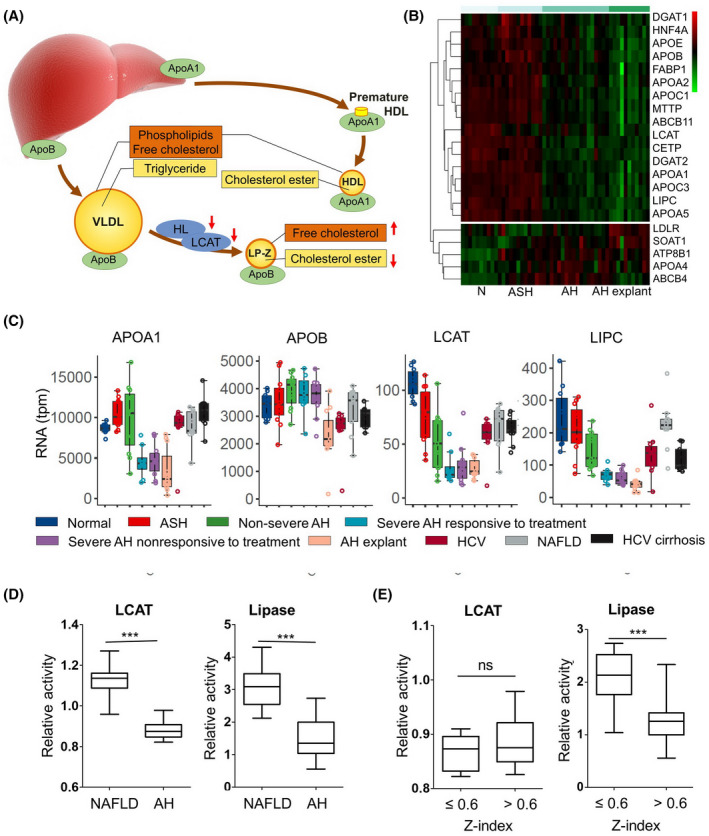FIGURE 4.

Mechanism for the accumulation of LP‐Z in AH. (A) A diagram of lipoprotein metabolism highlights liver‐derived apolipoproteins and enzymes responsible for the extrahepatic lipoprotein metabolism: lecithin cholesterol acyltransferase (LCAT) and hepatic lipase (HL) (i.e., lipase C hepatic type [LIPC]). (B) Heat map of genes responsible for lipoprotein metabolism from liver biopsies of healthy controls (N), early alcohol‐associated steatohepatitis (eASH), AH, and explants from patients with AH who underwent liver transplant. (C) Box plot comparisons of APOA1, APOB, LCAT, LIPC (HL), and CETP among healthy controls, eASH, mild–moderate AH, severe AH 90‐day survivors, severe AH 90‐day nonsurvivors, AH explant, HCV, NAFLD, and compensated HCV cirrhosis. (D) Serum activities of LCAT and total lipase among patients with AH (n = 39) and NAFLD controls (n = 40). (E) Serum activities of LCAT and total lipase among individuals with Z‐index ≤ 0.6 (n = 13) and Z‐index >0.6 (n = 26). P values calculated by a two‐sided t tests. ***p value < 0.001. Abbreviations: APOA1, apolipoprotein A1; APOB, apolipoprotein B; CETP, cholesteryl ester transfer protein
